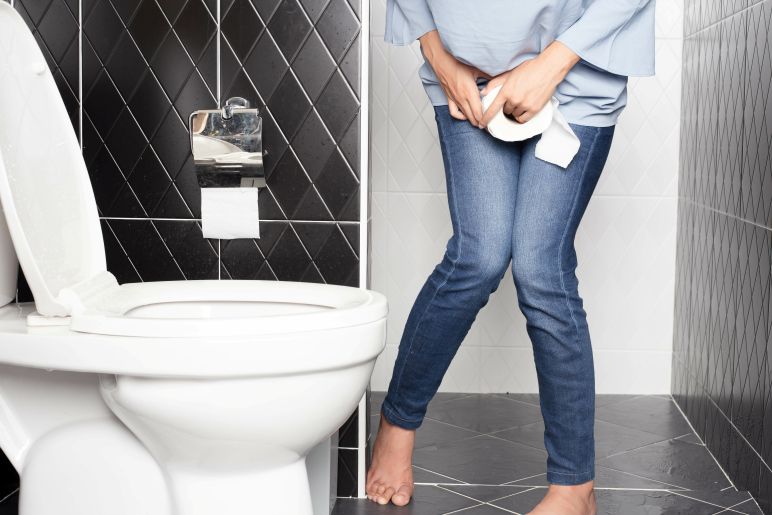
Lower Urinary Tract Symptoms and Female Sexual Function: Real Facts from Real Women

Pelvic floor disorders are chronic conditions that can negatively impact female sexual function, whether by distress from sexual pain or problems with the sexual response cycle (desire, arousal, orgasm). These conditions range anywhere from incontinence (both urinary and bowel) to pelvic organ prolapse (pelvic organs descend and begin to fall out through the vaginal canal).
The Problem
Pelvic floor disorders tend to cause lower urinary tract symptoms (LUTS), which include urinary urgency, frequency, incontinence and more. LUTS can negatively affect women’s quality of life, interfering with daily activities, as well as sexual behaviors and function like desire (libido) and ability to orgasm.
Unfortunately, there is not much research on the subject of LUTS and their relationship to sexual function, and even less for women who are not sexually active (NSA). Additionally, there is little information on LUTS and other chronic conditions as they relate to sexual function. These would include diabetes, menopause, etc.
The Solution
Using data from a 2017 study, researchers compared LUTS to female sexual functioning, shedding light on the true effects of these chronic conditions. The data comes from 528 women around 55 years old who were either sexually active (SA) or NSA, and who had visited one of several clinics for LUTS concerns.
Researchers used two tools to assess change over time:
- The LUTS tool: 44 questions assessing how severe and bothersome 22 urinary symptoms felt. Scores were calculated and weighted to fall between 0-100, where 0 represents no symptoms and 100 represents the most severe symptoms.
- The Prolapse/Urinary Incontinence Sexual Questionnaire, International Urogynecological Association-Revised (PISQ-IR): One section for SA women where higher total scores represent better sexual functioning, and one section for NSA women where higher scores represent a greater impact of the condition on their reason for being NSA. Basically, each section represents opposite effects of chronic conditions on sexual function.
They were also able to compare these scores to information given on the diabetes and menopause status of participants, to encompass all areas of focus.
Results
- The average LUTS tool score was lower for SA women (39 SA vs 42 NSA), meaning SA women’s LUTS were less severe than NSA women.
- Most NSA women were postmenopausal (85% NSA vs. 46% SA). Compared with PISQ-IR scores, menopause had less of an effect on sexual function in NSA women.
- There were no differences in any scores in comparison to diabetes.
Three hundred and thirty-seven (337) participants returned for 3-month and 12-month follow-up appointments:
- There was no improvement in sexual function between SA and NSA women over 12 months.
- LUTS scores decreased over a 12-month period for both SA and NSA women, regardless of whether they were receiving routine care for their condition. This may suggest that LUTS are not dependent on treatment but may change over time.
- Sexual function differed between SA and NSA women in terms of chronic conditions, namely, menopausal status.
Interpretation and Conclusion
Some of these results may sound confusing. If women are being treated for LUTS, then the PISQ-IR results should reflect that (negatively or positively), right? The authors stress that this study was simply observational. Meaning, providers were not required to treat patients in a specific way, only how they saw fit based on the conditions the patient was faced with. Thus, some women did not have any “formal” treatment at all. An experimental study may provide more information on specific treatments and improvement of symptoms.
This study provided detailed information on how different chronic conditions impact sexual function in women dealing with bothersome LUTS. Results reveal that this is a complex issue that needs to be highlighted more in research, to help further shape the understanding of sexual health in women with pelvic floor disorders.
References:
- Bretschneider, C. E., Smerdon, C., Bieber, B., Goodrich, N., Griffith, J., Lai, H. H., Hokanson, J. A., Kirby, A. C., Smith, A., Guerrero, M., Gutta, S., Flynn, K. E., John, K., & Bradley, C. S. (2025). Sexual function in women with bothersome lower urinary tract symptoms: Findings from the symptoms of lower urinary tract Dysfunction Research Network (LURN) Cohort Study. The Journal of Sexual Medicine, 22(6), 1035–1042. https://doi.org/10.1093/jsxmed/qdaf063



